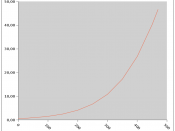Size at Birth and CHD � PAGE �1�
Size at Birth and Coronary Heart Disease:
An Analysis of the Longitudinal Study
Over the past 20 years researchers have studied the origins of coronary heart disease. Coronary heart disease kills more than 110,000 people in England every year. More than 1.4 million people suffer from angina and 275,000 people have a heart attack annually (CHD, 2005). Coronary heart disease (CHD) is "the end result of the accumulation of atheroma within the walls of the artery that supply the muscle of the heart." Most individuals with CHD show no evidence of disease for decades as the disease progresses until the infarct arise (Wikipedia, 2005). Rates of CHD are strongly related to social class and changed rapidly when the former Soviet Union and other former socialist countries of central and Eastern Europe start to experience the social and economic problems (Marmot, 2000).
There are two aspects that determine CHD. One of them is a factor that associated with growth in utero in the first year of life. Other, caused by social conditions and lifestyle acted later in life (Barker, 2005). So what exactly cause CHD? Are factors behind the rates of CHD?
To investigate that dilemma, Dr. David Barker, researcher at the University of Southampton in England, and colleagues went to Helsinki, Finland. They did a research study on how size at birth effects and poor living conditions increase the risk of getting CHD.
Dr. Barker was trained as a physician at Guy's Hospital, London, and thereafter at the Queen Elizabeth Centre in Birmingham. After spending almost three years in Uganda at Makerere University, he returned back to England and was appointed as a Director of the newly founded medical school at the University...


![In Tinsley 6% of coronary heart disease deaths and 11% of stroke deaths [are] ... attributable to outdoor air pollution... Tinsley has suffered for many years with both air pollution and excessive noise from traffic on the M1 and other roads in the area.](https://s.writework.com/uploads/2/29521/tinsley-6-coronary-heart-disease-deaths-and-11-stroke-deaths-thumb.jpg)